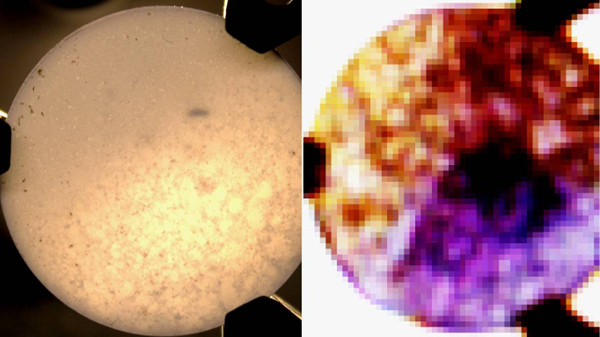(3D printable 2D materials based inks show promise to improve energy storage devices)
2019/7/30 英国・マンチェスター大学

・ マンチェスター大学が、スーパーキャパシタなどのエネルギー貯蔵デバイス用の電極を 3D プリント可能な、2D 材料の MXene を使用したインクを開発。
・ MXene は、チタンなどの遷移金属と炭素原子で構成された粘土状の 2D 材料であり、ドレクセル大学で開発された。MXene は他の粘土と違い、乾燥時には高い導電性を有し、親水性があり、水性懸濁液やインクの中で簡単に拡散する。
・ グラフェンは、銅より高い導電性を有し、鋼鉄よりも強靭で柔軟性があり極細な世界で最初の 2D 材料で、様々な特性をもつ他の 2D 材料の研究のさきがけとなったが、その特性を活用する為には、2D 材料をデバイスや構造物に効率的に搭載することが必要。実現にむけた製造アプローチと材料製剤の開発が課題となっていた。
・ 新技術では、数原子厚の大きな MXene フレークと水を独立して使用し、粘弾性のあるインクを形成する。このインクは、高さ 20 層以上の自立構造物を直接 3D プリントできる。また、MXene の高導電性により、集電装置フリーなスーパーキャパシタも直接 3D プリントできる。レオロジー的特性とアプローチの持続性との融合により、特にエネルギー貯蔵やアプリケーションの分野で、2DMXene の機能特性を必要とするカスタマイズ 3D 構造物に、高い汎用性が見込まれる。
・ 積層造形は、カスタマイズしたマルチマテリアルエネルギーデバイス製造の一手法だが、本研究を通じて、MXene の潜在的能力が実証され、エネルギー貯蔵アプリケーション分野での活用につながることが期待される。
・ スーパーキャパシタは、従来よりもはるかに少ないエネルギーを使用しながら、大量のエネルギーを発生できるデバイス。このような性質を持つデバイス用の 2D材料使用については、高導電性とデバイス重量の軽減に着目した多くの研究がなされてきた。
・ 今後は、電動自動車などの自動車産業や、携帯電話他エレクトロニクス等のデバイスに本技術を活用する予定。
URL: https://www.manchester.ac.uk/discover/news/3d-printable-2d-materials-based-inks-showpromise-to-improve-energy-storage-devices/
(関連情報)
Advanced Materials 掲載論文(アブストラクトのみ:全文は有料)
3D Printing of Freestanding MXene Architectures for Current‐Collector‐Free Supercapacitors
URL: https://onlinelibrary.wiley.com/doi/abs/10.1002/adma.201902725
<NEDO海外技術情報より>
Abstract
Additive manufacturing (AM) technologies appear as a paradigm for scalable manufacture of electrochemical energy storage (EES) devices, where complex 3D architectures are typically required but are hard to achieve using conventional techniques. The combination of these technologies and innovative material formulations that maximize surface area accessibility and ion transport within electrodes while minimizing space are of growing interest. Herein, aqueous inks composed of atomically thin (1–3 nm) 2D Ti3C2Tx with large lateral size of about 8 µm possessing ideal viscoelastic properties are formulated for extrusion‐based 3D printing of freestanding, high specific surface area architectures to determine the viability of manufacturing energy storage devices. The 3D‐printed device achieves a high areal capacitance of 2.1 F cm−2 at 1.7 mA cm−2 and a gravimetric capacitance of 242.5 F g−1 at 0.2 A g−1 with a retention of above 90% capacitance for 10 000 cycles. It also exhibits a high energy density of 0.0244 mWh cm−2 and a power density of 0.64 mW cm−2 at 4.3 mA cm−2. It is anticipated that the sustainable printing and design approach developed in this work can be applied to fabricate high‐performance bespoke multiscale and multidimensional architectures of functional and structural materials for integrated devices in various applications.



